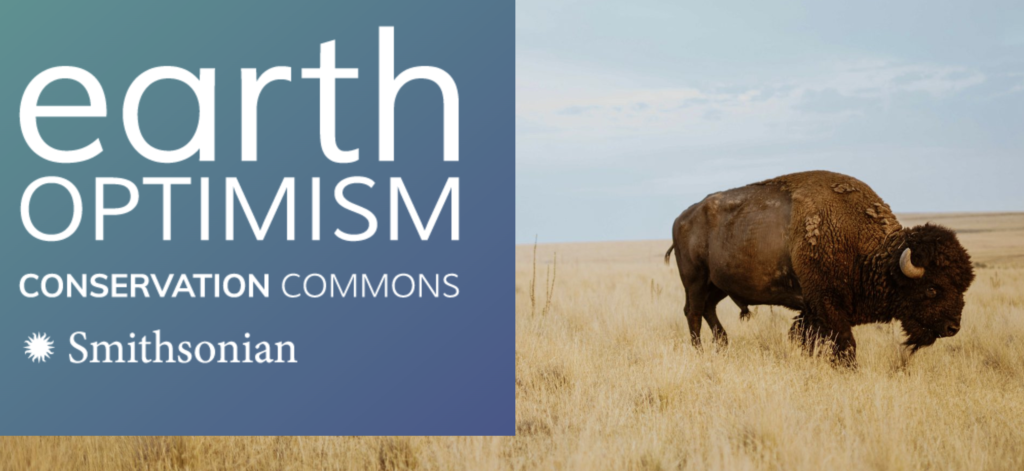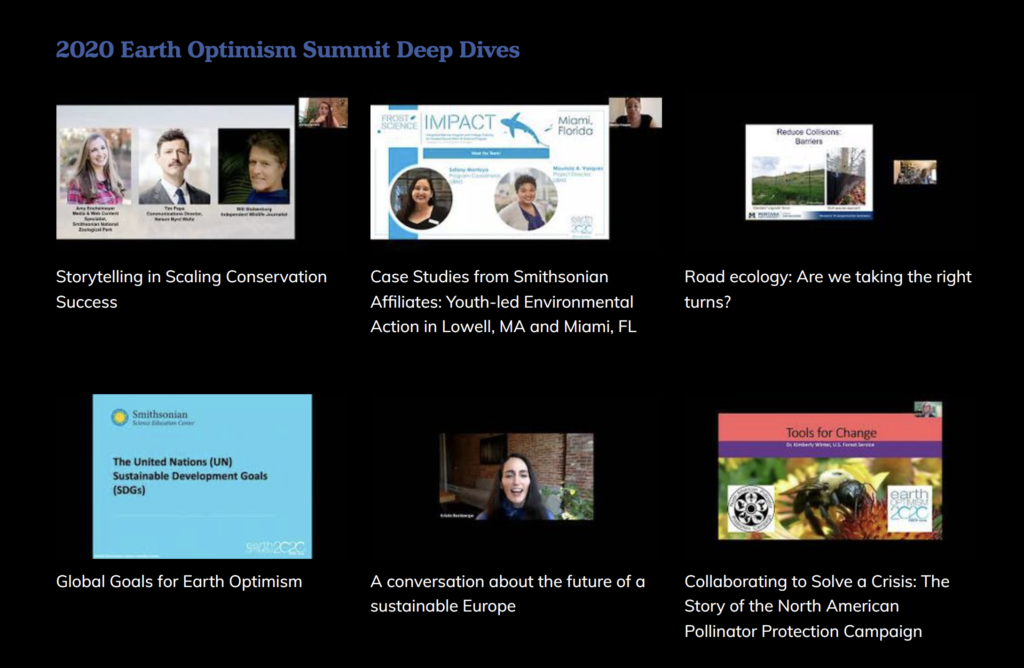Post #5: What about your internship has been an eye-opening (new or unexpected) experience? What were your initial expectations? Have these expectations changed now that you are half-way through? How? Why?
Last week I started the second semester of my internship at the Smithsonian Institution’s Center for Folklife & Cultural Heritage. My assignment for the next several months will be working on the Institution’s “Earth Optimism” project which will be on display at the Folklife Festival on the National Mall June 22–26 and June 30–July 4, 2022. Earth Optimism, a Smithsonian led movement started several years ago to recognize the 50th anniversary of Earth Day, focuses on changing the narrative from doom-and-gloom to hope, inspiring action and mobilizing a global community.
According to Smithsonian Secretary Lonnie Bunch, “Earth Optimism shows us how to find hope in the face of odds that might seem overwhelming. It reminds us that change happens when we focus on what works—when we collaborate to find solutions and celebrate our successes.”

The concept of Earth Optimism is in itself “eye-opening” since it is an attempt to re-frame or redefine the global debate over climate change. For most people, the constant stream of negative stories about the world’s climate is forcing them to tune out the message. As a result the media needs to balance their climate change reporting. More positive or “optimistic” stories can help.
For example, Climate Scientist Katharine Hayhoe during a recent Ted Talk addresses the problem of “How do you talk to someone who doesn’t believe in climate change?” She reminds us that you can’t rehash the same data and facts that has been reported on for years. Instead, Hayhoe suggests that the key to having a real discussion is to connect over shared values like family, community and religion — and to prompt people around the world to realize that they already care about a changing climate.

For the past several years the Smithsonian’s Earth Optimism project has been accumulating an extensive collection of video material on climate change. Dozens of video files are available on the Earth Optimism website. However the problem lies in the fact that this compelling content is not easily “discoverable”. Video titles and brief descriptions are listed. Unfortunately, the necessary metadata tagging, and indexing of transcripts is non-existent. I find this “eye opening” as well. My expectation is that large organizations like the Smithsonian should already have in place more efficient “cataloging” or media search functionalities on their websites.
Since the public has grown accustomed to streaming sites like Hulu and Netflix, the Smithsonian is at risk of not reaching their intended audiences. These popular sites are rich in metadata and assist viewers in their search for content. As a result the Smithsonian needs to review its long term media strategy. It is evident that the value of any media content is diminished by its lack of visibility. In addition, there is a lot that can be learned from social media like Youtube and TikTok. These sites employ sophisticated algorithms that learn from user’s preferences.
For the next several months I am hoping to make the Smithsonian staff more familiar with new digital tools and applications that aid in media indexing. In addition, I will suggest that a Earth Optimism “media tool kit” be developed. I believe this tool kit would be able to provide a comprehensive index of available stories and interviews. This will assist journalists in becoming more familiar with current and future Smithsonian stories and media resources regarding climate change. It will also help promote the Earth Optimism exhibit this Summer at the Folklife Festival.